Let’s take a look at the compulsories for the 1968 Olympic Games in Mexico City, including the piano sheet music!
The bar routine turned out to be brutal. Every single team had at least one gymnast score in the 8s (or lower) — even the Soviet Union.
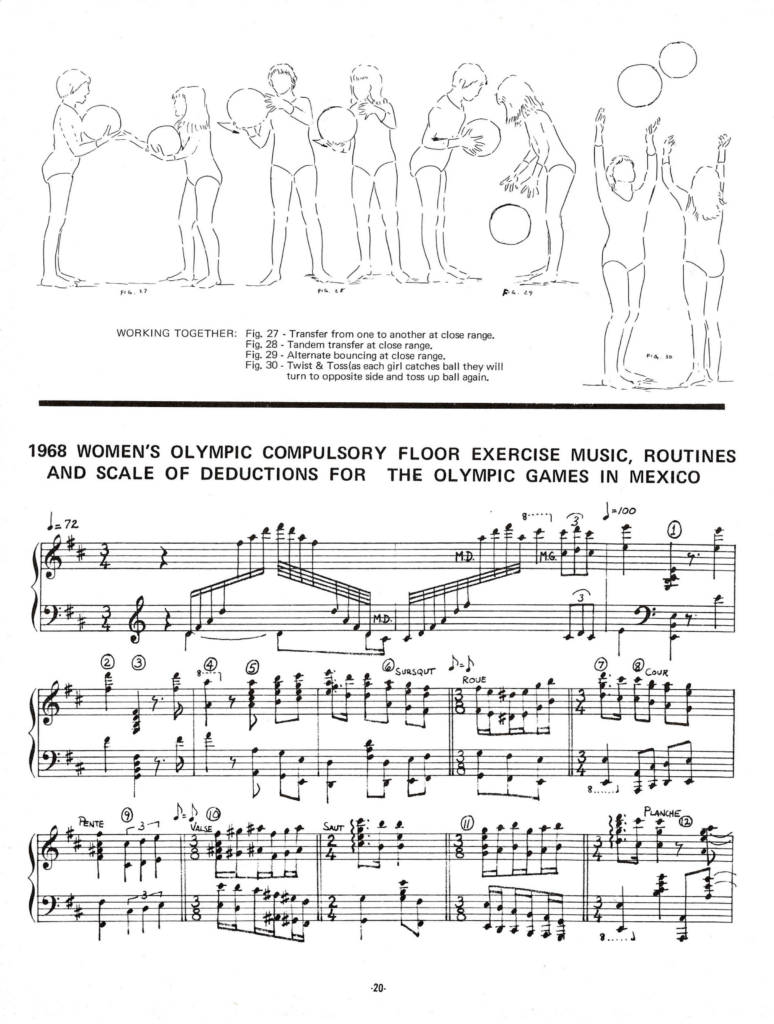
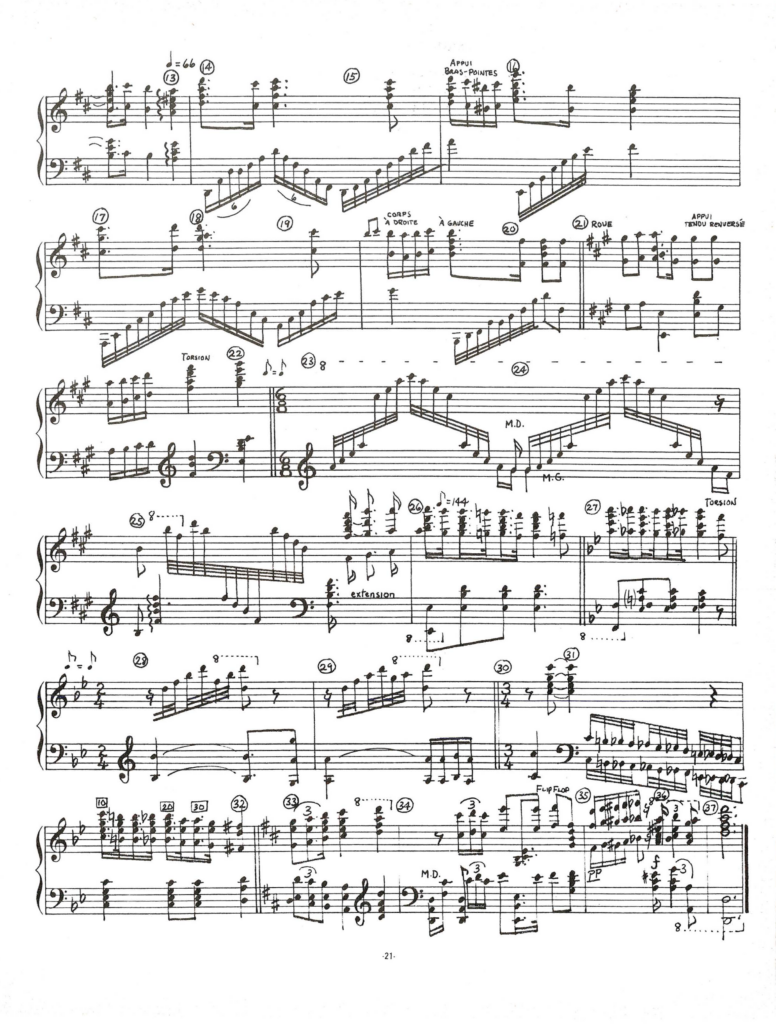
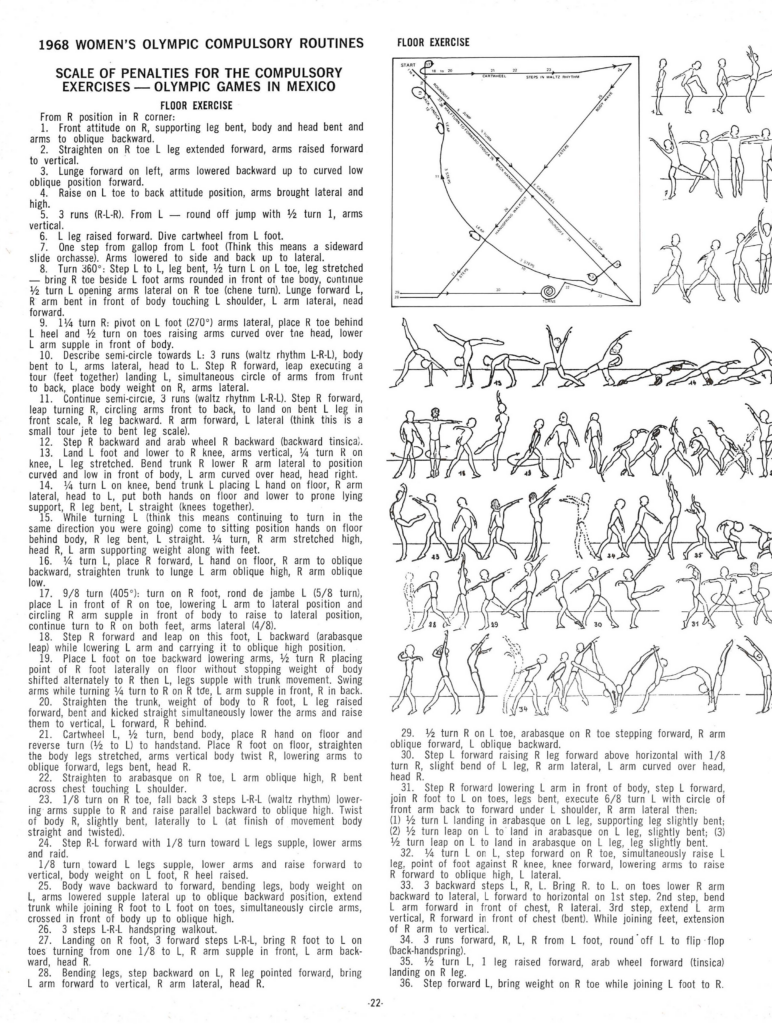
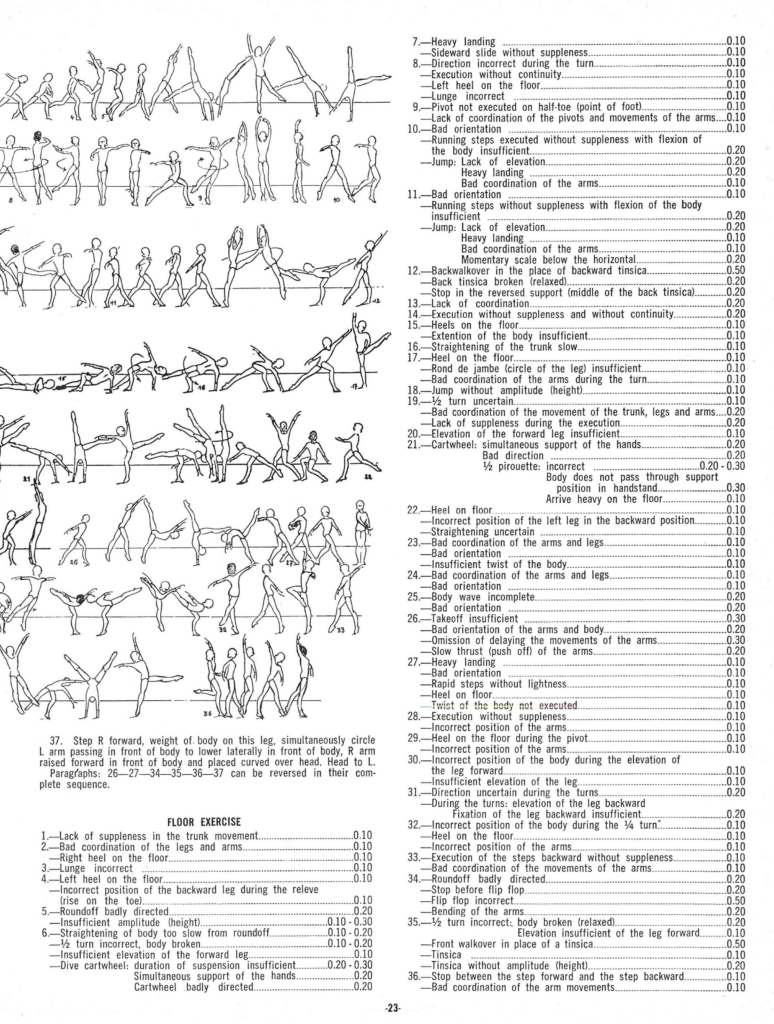
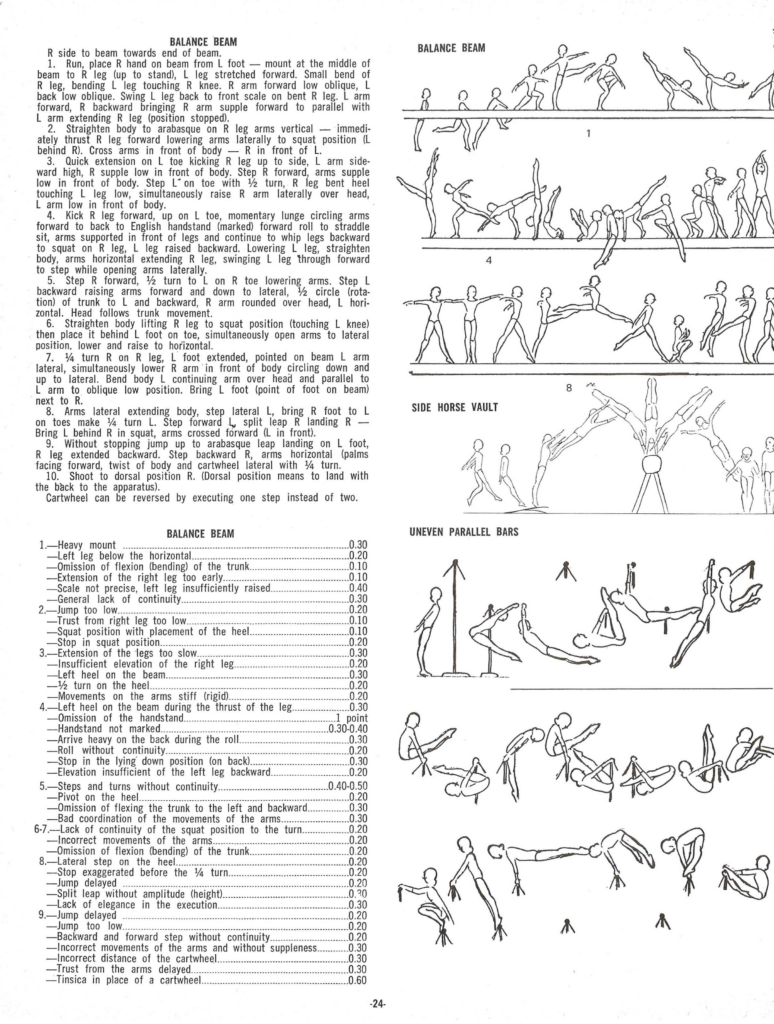
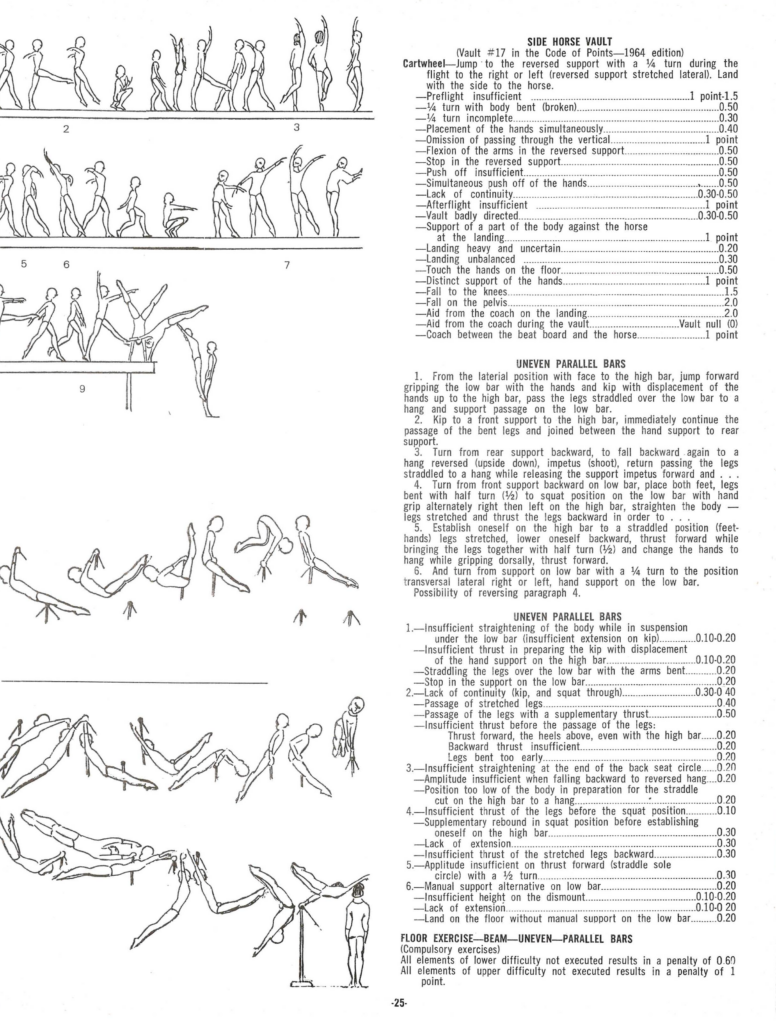
The piano music was unnecessarily complicated.
You can listen to the floor music here:
Note: This is my own recording. There are probably some mistakes. I’m not a professional musician and haven’t played music regularly in 15+ years.
No more compulsory repetitions
Prior to 1968, gymnasts could repeat their compulsories on every event except floor. Granted, they had to decide to repeat the exercise before the judges flashed the score, but they could repeat it nonetheless.
In 1968, that changed. While gymnasts still had two vaults, gymnasts would no longer have the option to repeat their compulsories.
On Scoring Compulsories
According to the 1968 Code of Points, the compulsories were judged out of a 10.0.
4 points
| Exactness and correctness of all parts of the exercise | 2.00 |
| Exactness and precision of direction and the floor pattern | 0.50 |
| Exactness of the rhythm of the exercise | 1.50 |
6 points
| Elegance of the gymnast | 1.00 |
| Sureness of the execution | 1.50 |
| Amplitude of the movements | 1.50 |
| Coordination of the movements | 1.00 |
| Lightness of the jumps and acrobatics | 1.00 |
When a gymnast omitted a part of the routine
- 1.0 deduction for a superior difficulty element
- 0.50 point for a medium element
Other Deductions
| Small changes that do not “facilitate” (i.e. make things easier) the exercise | 0.10 |
| If the gymnasts performs an acrobatic element on the wrong side | 0.50 |
| If the gymnast performs an “easy part” on the wrong side (i.e. right vs. left) | 0.20 |
| If the music is too slow or pianist waits for the gymnast | 0.50 |
Seems simple to judge, right?
Well, there’s more. There were a slew of deductions on each event, for every single move. For example, if your heel touched during a pivot turn on floor, there was a 0.1 deduction. See the text for the individual deductions.
How side horse vault was judged
Out of a 10.0
| Pre-Flight | 2.00 |
| Repulsion (Block) | 2.00 |
| After-Flight | 2.00 |
| Stretch/Position of the Body | 2.00 |
| Direction of the Vault | 0.50 |
| General balance of the vault | 1.50 |
The compulsory vault was a cartwheel vault (¼ turn onto the horse with a sideways landing.) There were extremely specific deductions. For example, if the gymnast placed her hands simultaneously on the horse, she received a 0.40 deduction. (Again, see the text for the list of deductions.)
Note: The FIG was criticized for the cartwheel vault
At the time, gym nerds recognized that sideways landings on vault weren’t good for your knees.
Don Tonry, a member of the 1960 U.S. Olympic team, in Modern Gymnast noted:
Shelly Cale, an up and coming All-Around competitor, underwent extensive surgery shortly after the 1968 Nationals as the result of the compulsory side landing on the horse vault. Shelly will never compete again.
Modern Gymnast, Jan. 1969
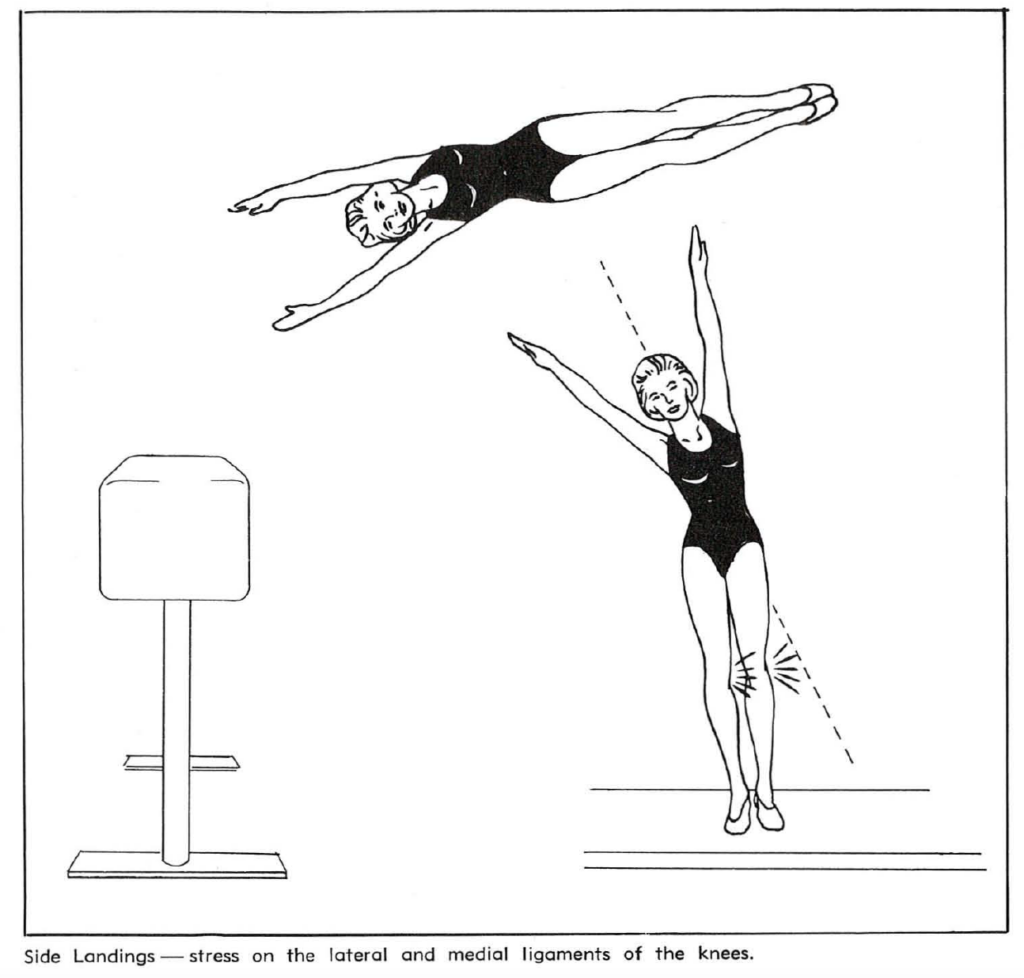
More on 1968